Crops grown in polyhouses are protected from the elements by a transparent or partially transparent covering. Polyhouses offer optimal plant growth conditions and shield them from environmental hazards and pests. Planting crops is a high-stakes venture. One major perk of polyhouse farming is how it helps farmers better manage their operations and lessens their exposure to weather-related dangers.
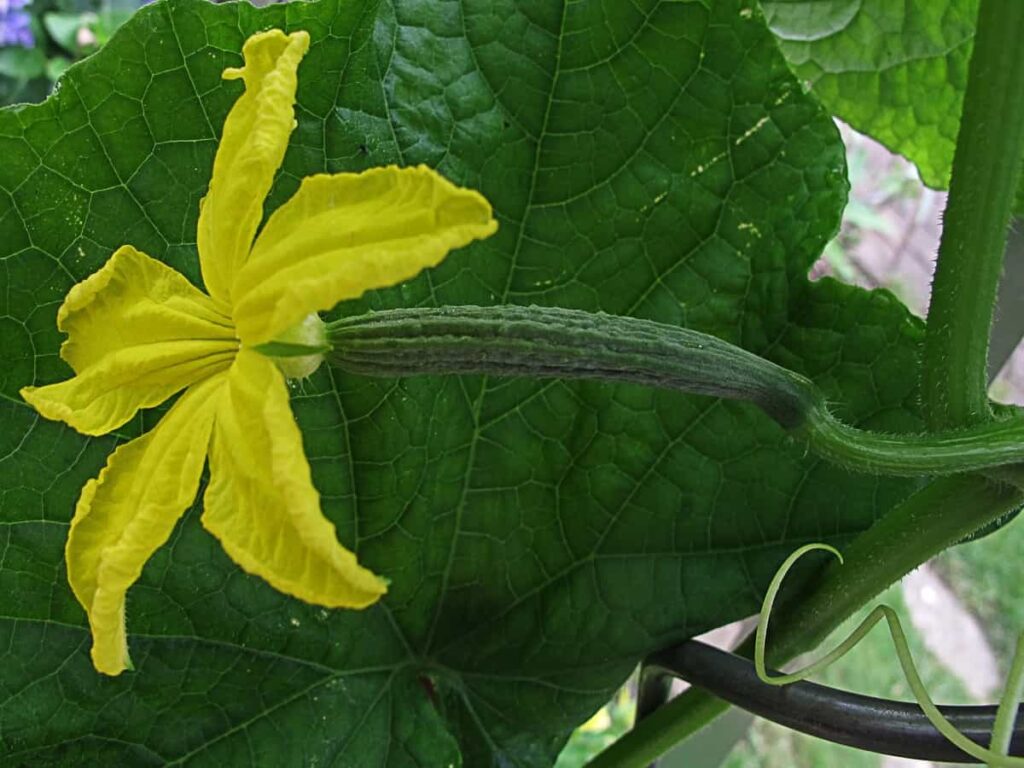
Specifically, polyhouse farming enhances crop yields by reducing the effects of adverse environmental factors and protecting crops from violent storms. In addition, polyhouse farming can allow farmers to grow crops outside the traditional growing season or extend the existing season. Polyhouses with extra features allow farmers to exert greater influence over their harvest, resulting in faster development and larger harvests.
A smaller area is better suited for polyhouse farming. Because of this, it can only be used to cultivate vegetables, flowers, herbs, and very small fruits like strawberries. The lack of natural pollination in a polyhouse is another drawback of growing plants in an artificial environment. In addition to the drawbacks already discussed, polyhouse farming is sometimes criticized as expensive. However, polyhouse building and upkeep expenses rely entirely on polyhouse construction and farm management systems.
How this farmer earning 40 lakhs from his cucumber farm
What are the advantages of polyhouses?
A polyhouse will be under your management. You, as the manager, get to choose the amount of light, the temperature, the humidity, the soil, and the plants. As a protective environment, a polyhouse ensures the survival of its plant inhabitants. There will be fewer places for pests that could otherwise kill your plants to hide. This protected polyhouse setting lessens the effects of droughts and deluges. In this setting, plants of all sizes and strengths can thrive.
Since you’re in charge of the “climate,” you can rest assured that your plants and harvest will thrive. The ideal circumstances for your plants should be determined by their specific requirements. You can encourage maximum growth by providing all the conditions above and safeguarding your plants from harsh weather. A polyhouse allows you to cultivate plants in an environment where the climate can be precisely controlled.
In case you missed it: Vertical Cucumber Farming for the Urban Gardener: Clever Ways to Get More Yields from Small Spaces
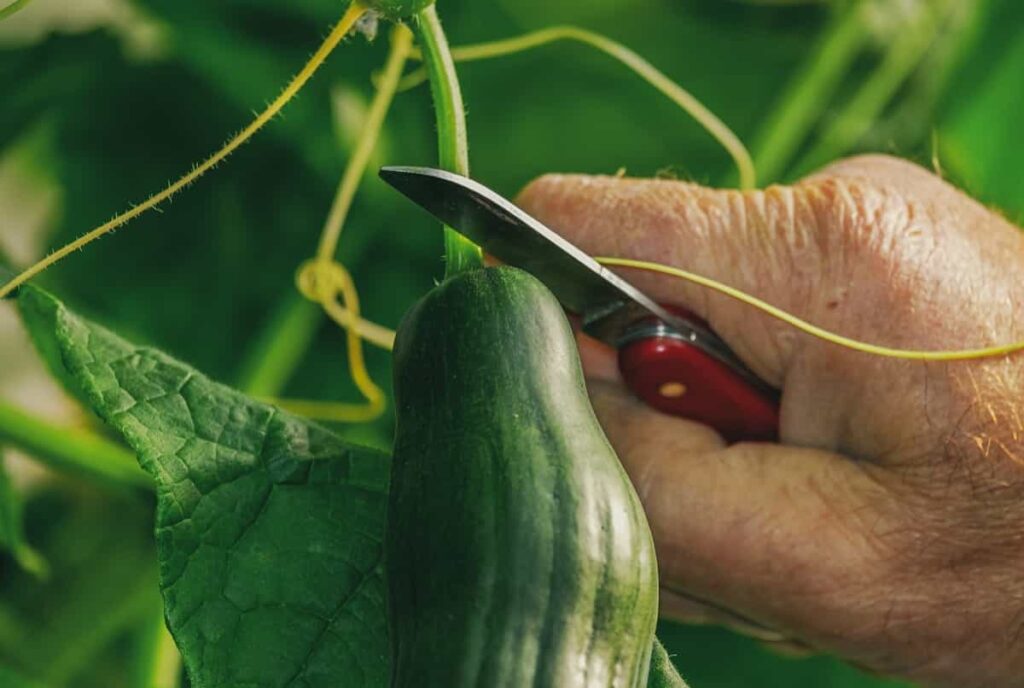
That information will provide you control over when you plant, harvest, and sow, depending on the time of year and the crop you’re growing. Various soil types in a polyhouse are wonderful, allowing for a more controlled growing environment for each plant. It’s another way in which polyhouses are versatile: they can contain many different kinds of plants.
You can have fruits, ornamentals, vegetables, herbs, and, in some cases, spices! Just think, if you build a solid polyhouse, you can reduce your visits to the farmers market. A polyhouse can serve as a place to store gardening equipment and supplies and manage different soil types. It’s everything you need to become a gardening pro.
Which variety of cucumber is suitable for a polyhouse in India?
While wide varieties of cucumbers are bitter and curved, English cucumbers are sweet, long, and straight, with few, barely perceptible seeds. You may also know them as European, seedless, or cucumbers grown in a polyhouse. The average length of an English cucumber is 14 inches, with a width of 1-1/2 to 2 inches. To achieve their signature form, they must be cultivated in an elevated position, hanging or supported by a trellis. They don’t rely on pollinators like bees, animals, or the wind to set seeds or fruit so that they may be cultivated year-round in polyhouses.
The success story of Mr. Venkatesh
Compared to normal agriculture practices, modern agricultural practices such as polyhouse culture has been a boon to many farmers. Polyhouse culture ensures a bountiful crop as it involves less water waste, a controlled and protected environment, and less effort, making farmers profitable in no time. This type of agriculture will give more scope for profits, says Mr. Venkatesh, a polyhouse cucumber farmer from Nalgonda, Telangana. Let’s get into Mr. Venkatesh’s cucumber farm and his success growing cucumbers in the polyhouse.
Mr. Venkatesh was an IT engineer based in Hyderabad who worked in that field for nearly six years. Due to continuous stress and a heavy workload, he quit his job and jumped into agriculture. However, he did not choose conventional agricultural practices for growing crops; instead opted for a polyhouse. He was already aware of a controlled environment’s polyhouse technique and the profits involved. He knew it could be a costly venture, too, but he thought his finances could be backed with a government subsidy.
In case you missed it: How to Protect Cucumber and Squash Plants from Powdery Mildew: Causes, and Treatment
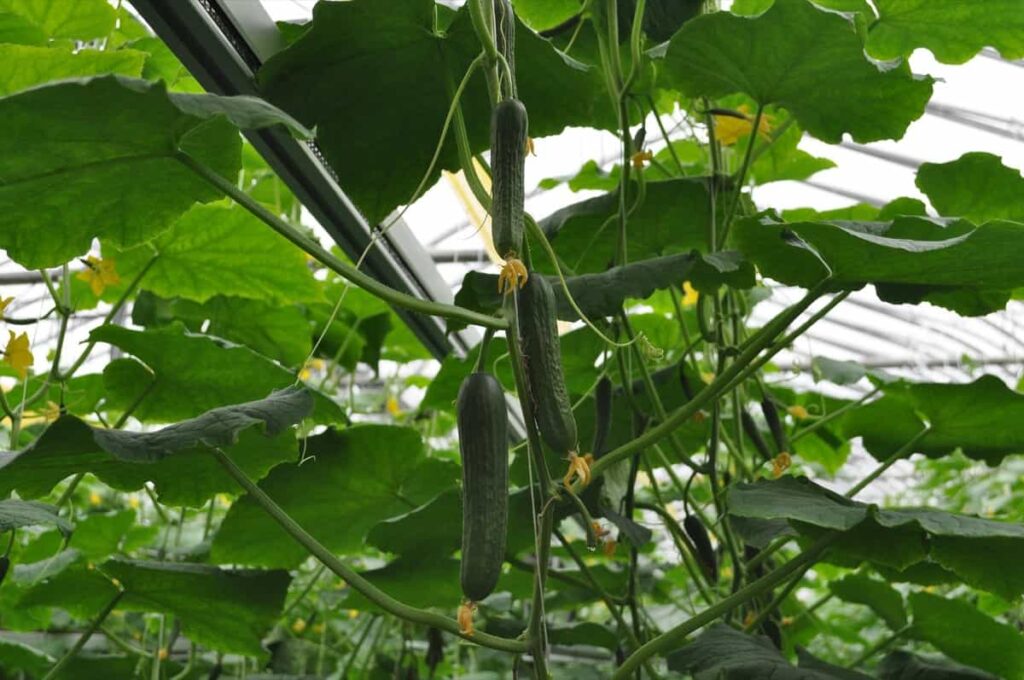
Why choose European cucumber? From Mr. Venkatesh’s words
Coming to the next important aspect, what crop to grow? For this, he took nearly one month to decide between various crops. As it was summer, he thought it was best to grow some vegetables that were in demand in the market. At last, he stopped with the thought of the cucumber crop and decided to grow it. Now, he came across a variety known as European cucumber, which can easily grow in polyhouses and is in demand the whole year.
He was finally happy that he chose a vegetable that is easy to grow and can be cultivated year-round in his polyhouse. He then started the necessary work. Mr. Venkatesh says that European cucumber will only take 36 days for the first harvest, whereas the local cucumber can take much more time and is inconsistent.
However, local cucumber is bigger, which varies from 200 to 400 grams; it’s not seedless. But European cucumber is seedless and is in demand year-round. European cucumber varies from 120 to 160 grams at the time of harvest. It is also easy to grow in a polyhouse and takes less time to mature. The water percentage is higher in European cucumbers than in local cucumber varieties.
Also, it is less bitter, more attractive, and tastier than local ones. European cucumbers can give a huge harvest when grown in a polyhouse. There is also no pollination problem, as it is a self-pollinated plant. The crop lasts 120 to 140 days from the time of sowing seeds. So you can get 3-4 crops every one batch (5 months) and will get two batches per year, which is huge.
Construction details of his polyhouse, according to Mr. Venkatesh
Polyhouses are costly and would be an impossible investment for farmers. Still, thanks to the state government support, you can get up to 75% subsidy on the building cost of poly houses, says Mr. Venkatesh. He added that this had greatly supported him in starting his business. He owns 6 acres of land, and he started polyhouse construction which took three months to complete the setup inside and outside.
This construction cost him nearly 60 lakhs after taking off the subsidy. This might look huge, but it’s only a one-time investment. You can get back this amount within two to three years. So as you can assume, your income will skyrocket in no time.
Land preparation for Mr. Venkatesh’s polyhouse
Beds should be prepared once the polyhouse construction is done, and this should be ready before the season starts. There should be 8 meters of space between each row/bed, and the pipeline will be placed on each bed for drip irrigation. For 1 acre, his space was 65 meters in length and 60 meters in width, allowing him to construct 42 beds per acre, which means for 6 acres, he has 252 beds for planting. Each bed has an 80cm width and 50 cm pathway.
In case you missed it: How to Start Cucumber Farming in USA: A Step-by-Step Guide to Planting to Harvesting
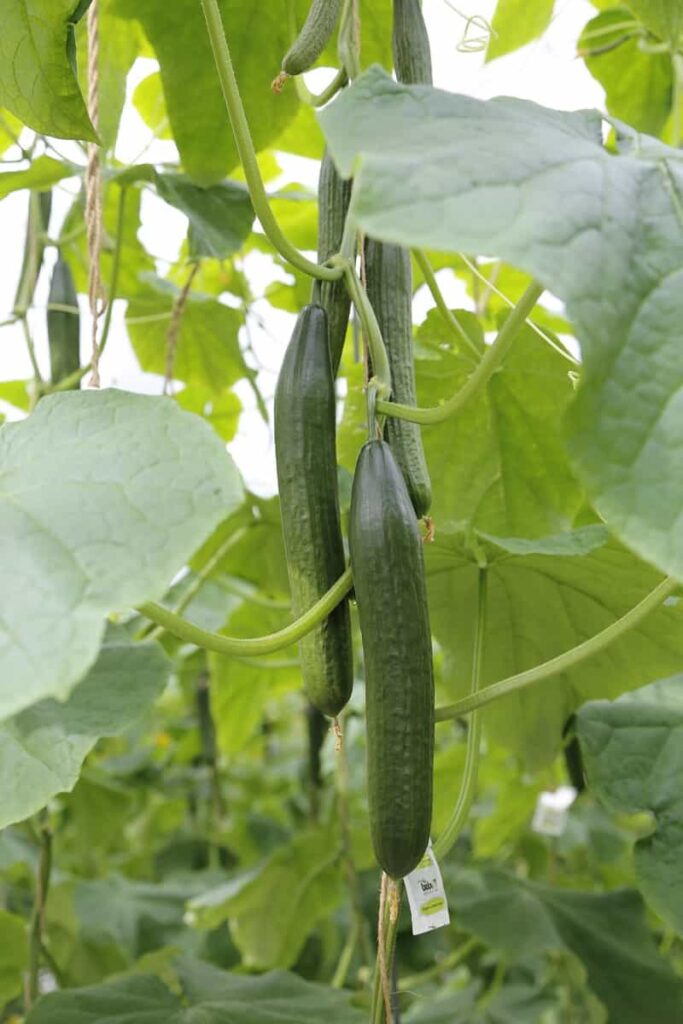
Also, before constructing beds, you must amend your soil with proper fertilizers; these fertilizers better be natural. While starting beds take nearly 350 tractors of red soil, 150 tractors of cow dung, and 1.5 tons of vermicompost, you have to amend the soil by mixing these with the help of laborers. To eliminate any present pests and prevent future infestation, the beds are to be fumigated with formalin and should be covered for a week in polythene sheets without disturbing them.
After this, the beds should be treated with micronutrients and animal manure to make the beds ready before starting the crop. Using natural fertilizers is a strict rule in polyhouse culture, as this helps fruits and the soil from getting polluted by harmful chemicals. Eventually, it will be hard for you to cultivate crops using chemical fertilizers. You can also make many natural fertilizers in your Polyhouse farm, which can reduce fertilizer costs, says Mr. Venkatesh. Also, once you prepare the beds, those can be used for nearly 4-5 years, cutting labor costs.
Details of Mr. Venkatesh’s cucumber cultivation
Mr. Venkatesh has sown 12,000 seeds per acre on his 6-acre farm. So, the total number of cucumber plants on Mr. Venkatesh’s farm is nearly 72,000. It cost him nearly 6.10 rupees per European cucumber seed. It took him four lakhs to buy the seed itself. The whole number of cucumber plants are watered by drip irrigation method. He placed two pipes on each bed for watering. For 15-20 days, the growth of European cucumber plants will be slow, but after that, they mature very fast, says Mr. Venkatesh.
The fertilizers are given to plants through the fertigation method. The fertigation method involves supplying liquid or dissolved fertilizer through the irrigation system. On his farm, Mr. Venkatesh uses the same drip-watering pipes for fertigation. He started fertigation after 15 days of sowing crops. He used 4 kgs of Mono ammonium phosphate and 19:19:19 every two days as a fertigation per acre.
From the 30th day onwards, he used MKP, 0:52:34, SOP, 0:0:50, daily 3 kgs per acre. Two times every week, the crops are treated with 3 kgs of calcium nitrate and 2 kgs of potassium nitrate. Watering should be monitored based on the available sunlight. Mostly it will be two times per day, 30 minutes each time. European cucumbers grow only below 30 degrees, so to control humidity, foggers are used across the Polyhouse.
Also, on his farm, he can control sunlight using rolling sheets on the walls of the Polyhouse. To control temperature, one can roll the sheet to allow or block the heat from entering the polyhouse to get the required temperature in the Polyhouse. To control sunlight, one can open or close the nets placed above the Polyhouse. If you open the nets, it will allow more sunlight and vice versa.
In case you missed it: Top 20 Steps to Boost Cucumber Yield: How to Increase Cucumber Size, Quality, and Production
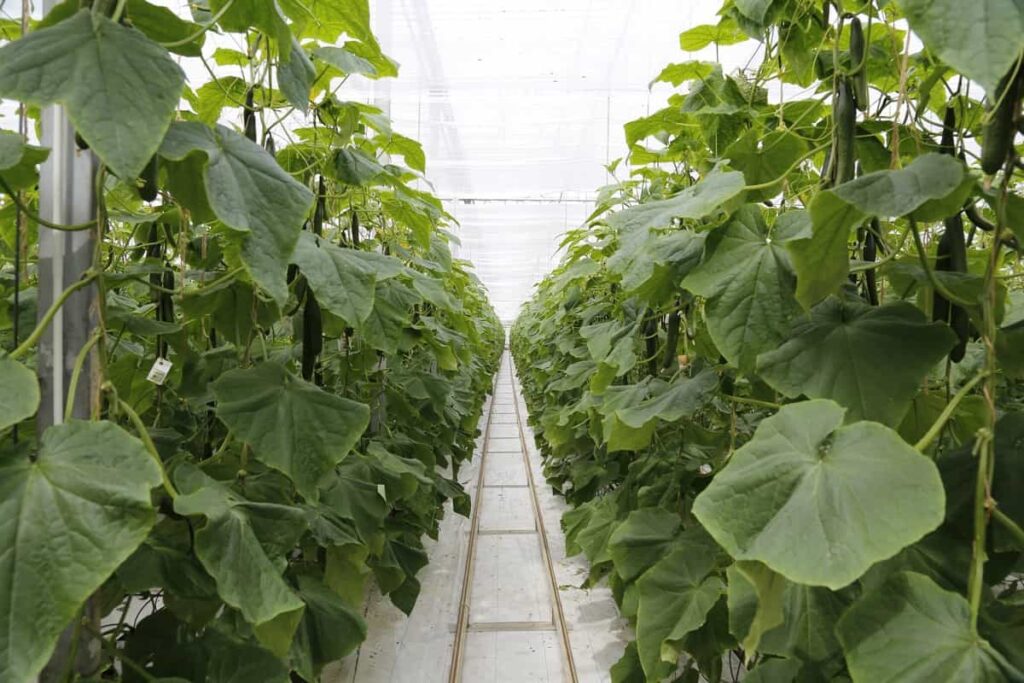
Also, for stacking Mr. Venkatesh, he used nylon wires, which cut his labor costs. The crops can get tangled easily by installing nylon wires across the beds, and you will have vines creeping in no time. This is also a very efficient way to stake cucumber plants. When it comes to pests and diseases, they are very rare in Polyhouse and European cucumber varieties. You can use neem oil beforehand to prevent any infestation that might occur if in case. You can expect nearly 5 to 6 kgs from each plant, says Mr. Venkatesh from his experience.
Profit analysis of Mr. Venkatesh’s Polyhouse cucumber farm
Mr. Venkatesh says that for an acre, his income would be between 10 to 12 lakhs for two batches per year, meaning he would get 60 to 72 lakhs for his whole farm. Excluding one-time investment costs, it costs him nearly 20 to 22 lakhs as an investment for two batches per year. This means his profit would be around 40 to 50 lakhs per year.
This is huge for a farmer. Even if you included a one-time investment cost, you could cover it in 3 to 4 years while earning nearly 20 lakhs annually. You have to note that the above-taken figures for profit analysis are based on the average performance of the crops. If you are more careful and take constant care of your Polyhouse cucumber farm, there is a high chance that you could get more profits than mentioned above.
In his experience, Mr. Venkatesh suggests that more farmers enter this field. From his experience, he ensures farmers that these modern agricultural practices are more profitable and safer. He also says that he is happy with what he is earning and is also satisfied with the work that he is doing.
In case you missed it: Hydroponic Cucumber Farming, Planting Procedure
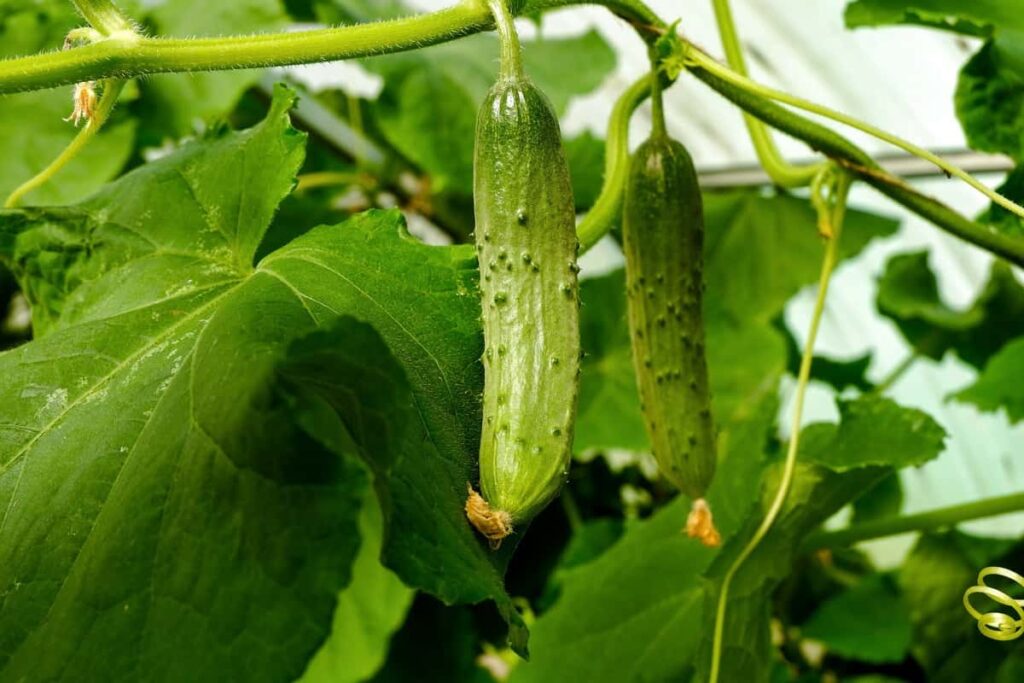
- Types of Pesticides Used in Agriculture: A Beginner’s Guide
- Economical Aquaculture: A Guide to Low-Budget Fish Farming
- 15 Common Planting Errors That Can Doom Your Fruit Trees
- How to Make Houseplants Bushy: Effective Tips and Ideas
- Innovative Strategies for Boosting Coconut Pollination and Yield
- Pollination Strategies for Maximum Pumpkin Yield
- The Complete Guide to Chicken Fattening: Strategies for Maximum Growth
- Natural Solutions for Tulip Problems: 100% Effective Remedies for Leaf and Bulb-Related Issues
- Revolutionizing Citrus Preservation: Towards a Healthier, Greener Future
- Natural Solutions for Peony Leaf and Flower Problems: 100% Effective Remedies
- Maximizing Profits with Avocado Contract Farming in India: A Comprehensive Guide
- Natural Solutions for Hydrangea Problems: 100% Effective Remedies for Leaf and Flowers
- The Ultimate Guide to Choosing the Perfect Foliage Friend: Bringing Life Indoors
- From Sunlight to Sustainability: 15 Ways to Use Solar Technology in Agriculture
- The Ultimate Guide to Dong Tao Chicken: Exploring from History to Raising
- The Eco-Friendly Makeover: How to Convert Your Unused Swimming Pool into a Fish Pond
- Mastering the Art of Delaware Chicken Farming: Essentials for Healthy Backyard Flocks
- 20 Best Homemade Fertilizers for Money Plant: DIY Recipes and Application Methods
- How to Craft a Comprehensive Free-Range Chicken Farming Business Plan
- Brighten Your Flock: Raising Easter Egger Chickens for Beauty and Bounty
- How to Optimize Your Poultry Egg Farm Business Plan with These Strategies
- Subsidy for Spirulina Cultivation: How Indian Government Schemes Encouraging Spirulina Farmers
- Ultimate Guide to Raising Dominique Chickens: Breeding, Feeding, Egg-Production, and Care
- Mastering the Art of Raising Jersey Giant Chickens: Care, Feeding, and More
- Ultimate Guide to Raising Legbar Chickens: Breeding, Farming Practices, Diet, Egg-Production
- How to Raise Welsummer Chickens: A Comprehensive Guide for Beginners
- How to Protect Indoor Plants in Winter: A Comprehensive Guide
- Ultimate Guide to Grow Bag Gardening: Tips, Tricks, and Planting Ideas for Urban Gardeners
- Guide to Lotus Cultivation: How to Propagate, Plant, Grow, Care, Cost, and Profit
- Agriculture Drone Subsidy Scheme: Government Kisan Subsidy, License, and How to Apply Online
- Ultimate Guide to Raising Araucana Chickens: Breed Profile, Farming Economics, Diet, and Care
- Bringing Hydroponics to Classroom: Importance, Benefits of Learning for School Students
- Ultimate Guide to Raising Polish Chickens: Breed Profile, Farming Economics, Diet, and Care
- Ultimate Guide to Raising Australorp Chickens: Profile, Farming Economics, Egg Production, Diet, and Care
- Silkie Chicken Farming: Raising Practices, Varieties, Egg Production, Diet, and Care
- Sussex Chicken Farming: Raising Practices, Varieties, Egg Production, Diet and Care